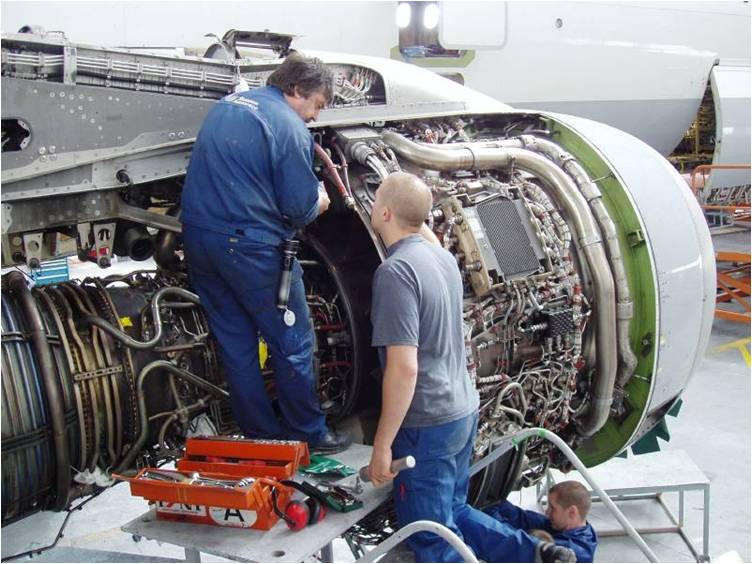How to be a skilled Trainer
In most countries in the world, if you become a subject matter expert (or a skilled operator) – your company should ask you to go on a train-the-trainer course.
You should say yes. You need Train the Trainer skills to compliment your natural acuity.
This happens a lot in Aviation in both the EU and the USA where specialist skills, equipment or training is commonplace and staff turnover is high.

But given that we are a regulated industry, this status of “Trainer” also requires qualification. We don’t mean the subject or the skill. We are talking about your ability as a person to train or instruct others. Which is a separate skill in itself.
Train-the-Trainer Instructor Model
“Train-the-Trainer” is the course SME’s need. In the EU, its QQI moniker is 6N3326, so if you are looking at courses for yourself then this is the code you are looking for. Otherwise, keep looking.
In the USA, you need to make sure that your Train-the-Trainer course is certified by www.accet.org. IATA also has one that takes 3 days. Courses are normally held in cities across the USA. You can get more details from IATA.
This is important as most aviation authorities require that you have this course and approval before they allow you to work as a certified trainer. This is not just your company; this is the regulatory environment.
So don’t just do any old course – make sure it is accredited for you in your country or your authority will not accept you as a trainer. It is a proven trainer model that works for all potential Instructors.

Tailored Training Experiences
Now, not everyone is a natural instructor or orator. But you can learn this skill. And once you learn some basic skills and the trainer program, your natural ability will shine through once the scaffolding and safety nets are in place.
And its easy because of one reason, you have come to this point in your organization because you have excelled at your skill or subject-matter and we need you to spread the word a little further as an internal trainer.
Question: “Classroom versus online Train-the-Trainer course?”
This comes up a lot. We are not saying this course cannot be done online. It can. But it just won’t be any good and you will not learn the skills you need. Fact.
What we are saying is that a good train the trainer course teaches you how to be an effective trainer and instruct in a classroom setting. If you end up creating training content for online courses or distance learning that’s fine, that’s an evolution of these same skills.
But Train the Trainer is primarily a facilitation skills-based course. A hands-on course for hands-on training. And you will need to teach a short module in front of other people and be evaluated as you do it in person. These training workshops cannot be done properly online.
Trainer Programs
Question: “What am I going to do on this course?”
Great question. And I hope you like the questions, because you are going to get a lot of them. The Train the Trainer course is quite simple in design. It is comprehensive, spread over 3 days – just like the IATA course. The training content covers.
- Learning Styles
- Training Needs Analysis + Program Plan
- Session delivery + Evaluation

The Learning Styles
This will be all of Day 1. Academics have decided there are Four types of learners. You can search “Learning Styles, FEDA 1995 or Honey and Mumford “The Manual of Learning Styles, 1992” if you potential Instructors would like to dig deeper.
It’s important you read and understand these styles as it describes your staff audience, adult learning principles and what their preferred way of learning might be.
Briefly, these styles ;
- Activists
- Reflectors
- Pragmatists
- Theorists
It’s never possible to always satisfy all types., But some minor changes in delivery can help. Once you are aware of the types, life can be a whole lot easier. Thankfully, your course will dig deep into this, and you will gain the skills in how to deliver to these styles as well as how to evaluate them.
Training Needs Analysis + Program Design
Now it’s Day 2. You now need to apply the theory to the practical. This is the scaffolding we were talking about. Each course has different learner types but there is many subjects and many skills to be taught so we need some form of framework to go by.
We do this through a TNA or Training needs analysis. This is what will build the training sessions. You are taught to ask the following questions.
- Who are the Learners?
- Why do they need this training?
- How much do they know before the course starts?
- What do they need to know, or be able to do by the end of the course.
Hopefully, the answers to those questions will form the pillars of your “test” course. This is what Instructors are evaluated on. It is these pillars that now need to be fleshed out into the program plan or Syllabus once you are in the field. You will also create the assessment here.

Trainer Model
You should have your own Training Manual. And your Training Sessions plan should have the following;
- Clear list of aims and objectives
- At the end of this training session you will be able to….Clear lesson plan for the sessions including the structure and content such as;
- Detail timings
- Brief content overview as primers
- Detail any materials needed
Session Delivery and Assessment
Instructors will be asked to deliver test courses on Day 3. This training session reflects your newly acquired skills in training. In front of your classmates, you will deliver a 10-15 minute “lesson” from start to finish to prove you’ve got the right stuff. Hopefully, you will execute the following well.
1: Good introduction and setting out the aims of the course.
2: Introduce the topic, its importance, and its relevance to the learners.
3: Tell them how they will be assessed. So, they know the objectives.
4: Ask their opinions, get them engaged, move about the room. Leave gaps for questions.
5: Challenge things that are wrong and provide correction. Work in an inclusive, non-judgmental manner and with as much confidence as you can muster.
6: Include the quieter ones. Try to see who is taking a back seat and invite them into the conversation.
7: Always ask questions. Never deliver the topic start to finish, that’s death on a cracker.
Subject Matter Expert
You can’t switch on an app or answer the phone without someone sending you a survey or a how-did-I-do questionnaire. They are annoying but you need them badly. On successful completion of your course, your classmates will give them to you and so will the trainees you face in the field.
You should welcome them, what’s past is the past and now you have the knowledge to correct any small issues in the future and improve your own training sessions. And who knows where the road will lead. This is what we do
- Self-evaluate your own performance as a trainer. What was good? How can I improve my Trainer Process?
- Write a list of things you would do differently.
- Write down how you felt delivering to a class of adult learners.
Talents
And it’s a challenging thing to do, become an experienced trainer. Some people revel in it – good and bad. And you know the bad. These people are the worst. External trainers that love the sound of their own voice and they just want to speak for hours about their beautiful course and their opinion on everything. From safety training to how world hunger might be solved.
Don’t do that. Engage with your audience. Staff learn through engagement, and they will forget 90% of what is spoken to them. Never focus on the negative or the mistakes or what you did or didn’t do in the session. No one cares. You are a frog hopping across a lake from lily pad to lily pad and sometimes you miss one.
Your audience is not looking at you splashing around the pond, they are patiently waiting for that next lily pad and how it connects to the next one. And the next. And hopefully on Day’s 1 and 2 you will have figured that all out. At least well enough that they are enthralled by your delivery and your skills.
Hopefully.








